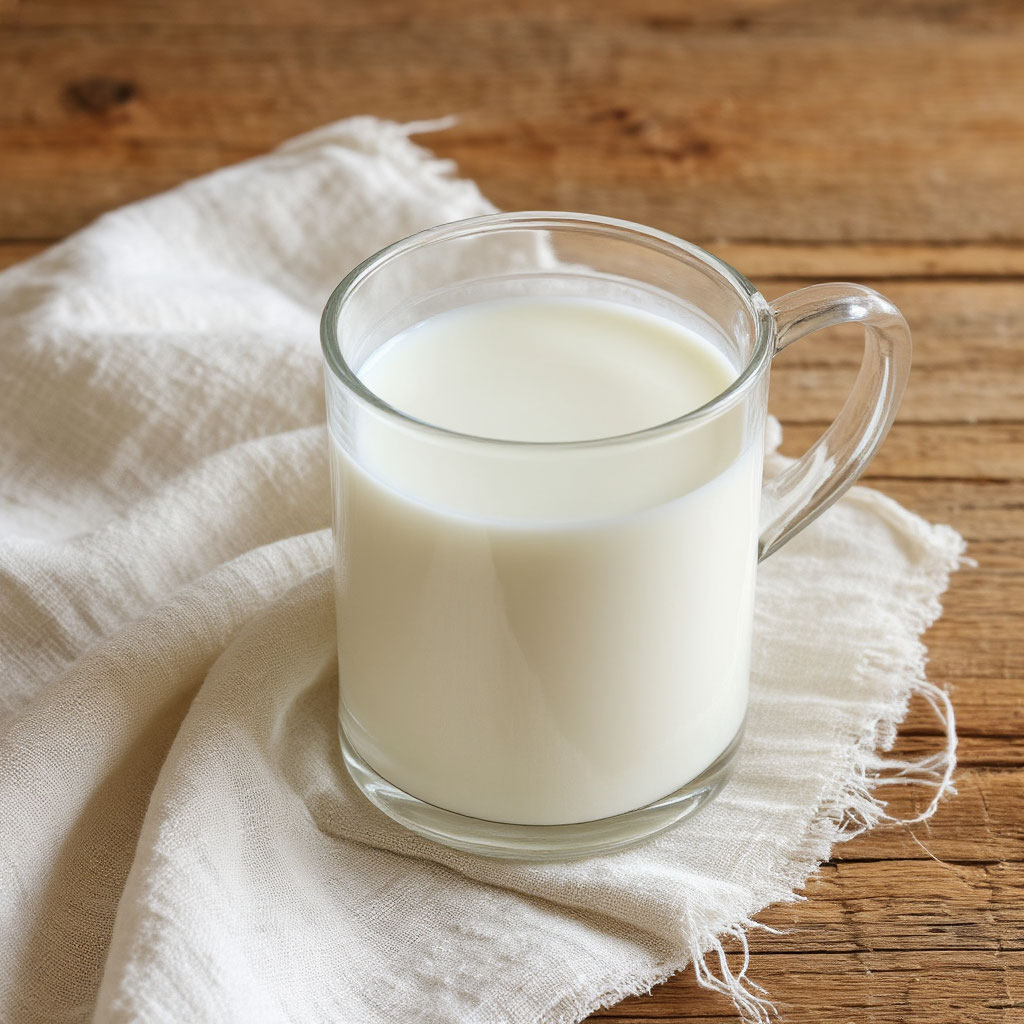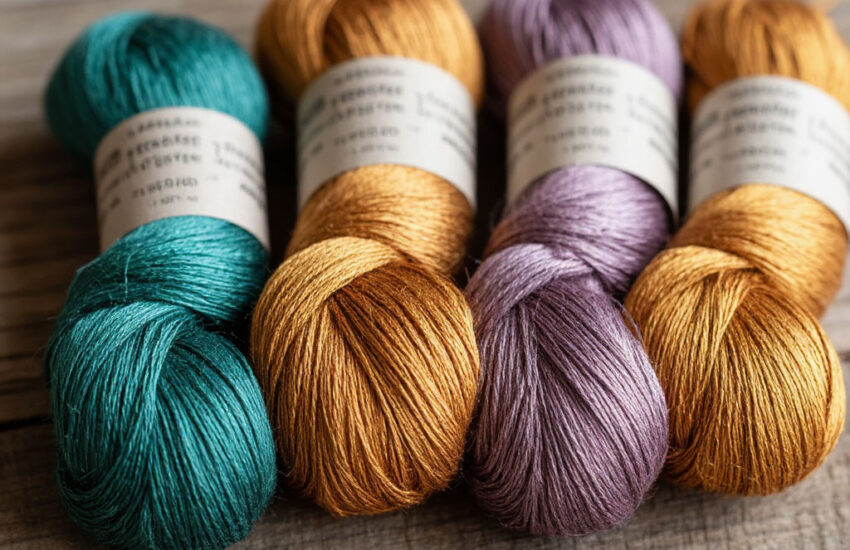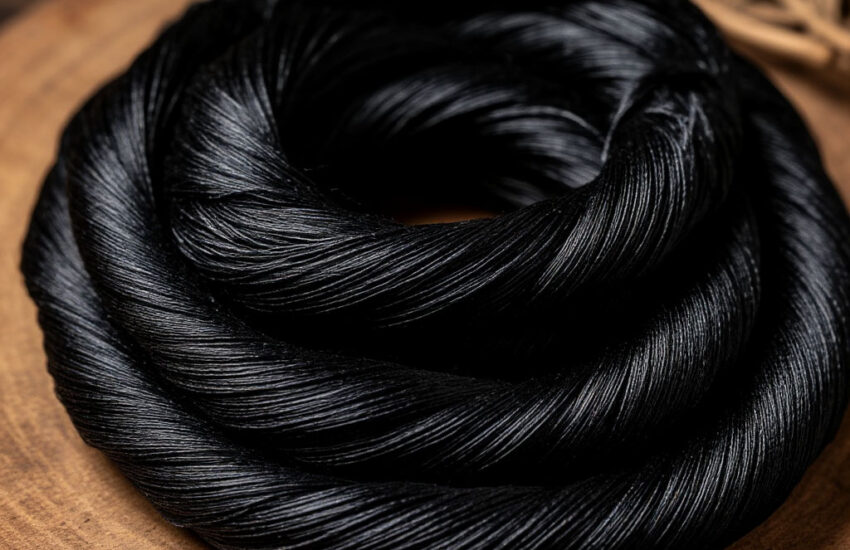Milk Fabric: The Innovative Dairy-Based Textile
Contents
- 1 Milk Fiber: How Dairy Becomes Fabric
- 2 Benefits of Milk Protein Textiles
- 3 Is Milk Fabric Really Sustainable?
- 4 Where to Buy Milk Fiber Clothing
- 5 FAQ
- 5.0.1 Is milk fabric vegan or cruelty-free?
- 5.0.2 Can people with lactose intolerance or milk allergies wear milk fabric?
- 5.0.3 Will milk fabric smell like milk or go bad over time?
- 5.0.4 Does milk fabric shed microplastics in the wash?
- 5.0.5 How much does milk fabric cost in the U.S., and where can I buy it by the yard?
Imagine slipping into the softest t-shirt that caresses the skin like a second breath. It breathes, moisturizes, and unbelievably, it’s made from milk fiber fabric. This innovative material is not science fiction but a reality in modern textiles.
How does ordinary milk transform into luxurious milk protein fabric? Why are environmentalists and fashion enthusiasts embracing this material? And where can sustainable dairy textiles be found? Let’s explore the details. By the end of this article, you’ll be able to download a checklist — a simple guide to exploring milk fabric as an innovative and sustainable textile option.
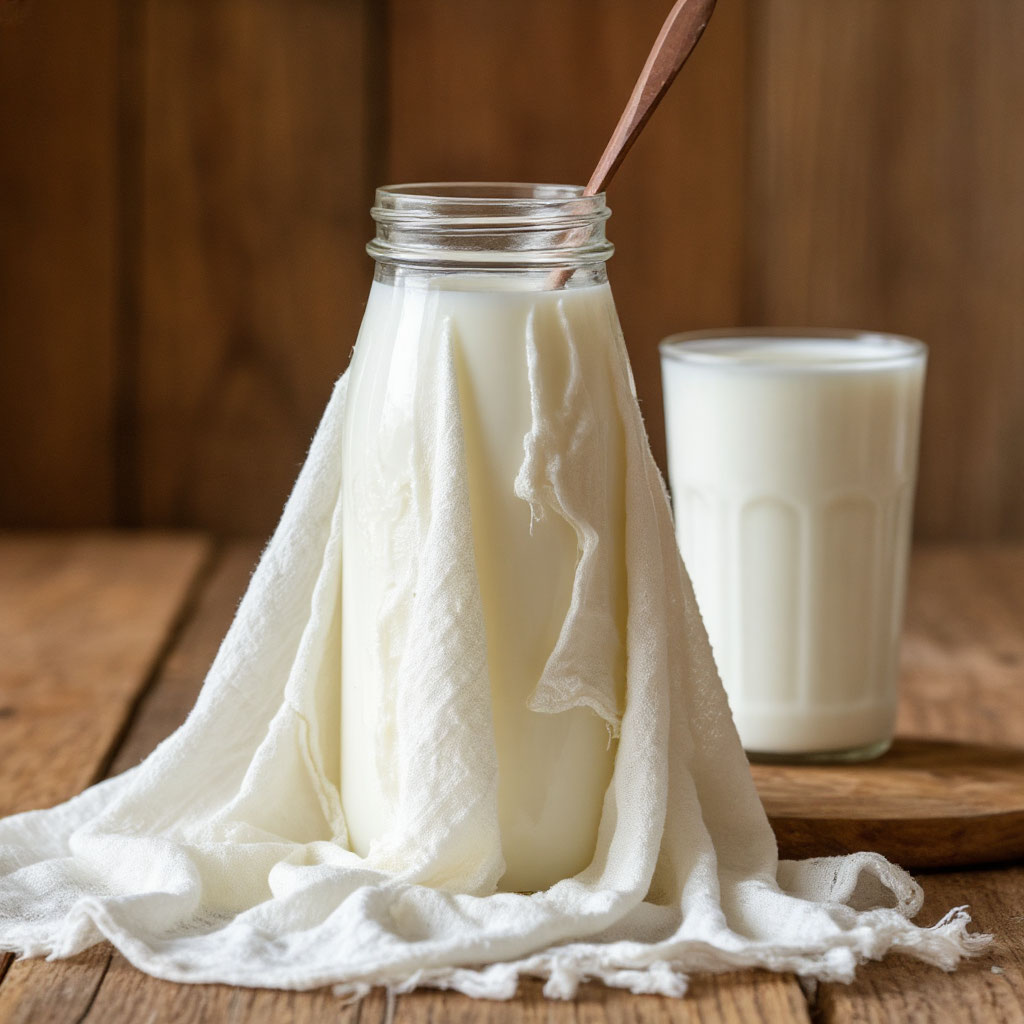
Milk Fiber: How Dairy Becomes Fabric
The foundation of milk fiber fabric lies in casein, the primary protein in milk, also used in cheese production and cosmetics. While cheesemaking simply curdles casein, creating milk fiber fabric requires advanced processing.
Casein Extraction: From Milk to Powder
The process begins with skimmed milk, often utilizing expired dairy products. The milk is heated, and acid or enzymes are added to separate casein from whey. The resulting curd-like sediment is washed, dried, and transformed into a fine powder.
Dissolution and Fiber Formation
The casein powder dissolves in an alkaline solution, creating a viscous liquid resembling honey. This “liquid yarn” passes through spinnerets—devices with microscopic holes similar to showerheads. Under pressure, the solution stretches into thin fibers.
Fiber Hardening
Freshly formed fibers are initially fragile, so they are immersed in baths containing aluminum salts and formaldehyde (though these chemicals are later washed out). This step ensures durability and wash resistance.
The finished threads resemble silk or fine wool—lightweight, shiny, and incredibly soft.
The History of Milk Textiles: From 1930s Experiments to Sustainable Fashion
The first attempts to create milk fiber fabric date back to 1930s Italy. Facing cotton shortages, the country developed Lanital (later renamed Merinova), a casein-based fabric marketed as a “national textile.” However, the process was costly, and the fibers were brittle.
The technology was revived in the 2010s when German startup QMilk developed a more sustainable method, reducing chemical usage. Today, milk fiber fabric is recognized as an eco-friendly alternative to synthetic materials and even cotton, requiring far less water for production.
Milk vs. Cotton: Why Casein Fiber Benefits Outweigh Traditional Textiles
- Zero-waste production – Expired milk that would otherwise be discarded is repurposed.
- Energy efficiency – Producing 1 kg of milk fiber fabric requires 20 times less water than cotton.
- Biocompatibility – Casein, a natural protein, is hypoallergenic, unlike synthetic fabrics that release microplastics.
Challenges remain, such as chemical treatment requirements and higher costs, but advancements in technology are addressing these issues.
The Future of Milk Protein Fabric: Innovations and Hybrid Materials
Scientists are experimenting with hybrid fibers, blending casein with:
- Spandex for enhanced elasticity;
- Bamboo for increased strength;
- Silver nanoparticles for antibacterial effects.
In Japan, researchers are developing “smart” milk fiber fabric that changes color when heated.
Sustainable Dairy Textiles: Measurable Benefits
When it comes to sustainable dairy textiles, skepticism is common: “Why make clothing from milk?” Yet, casein fiber benefits are undeniable. This fabric represents a breakthrough in material science, combining eco-friendliness with premium comfort.
From how milk fabric is made to its environmental advantages, milk fiber fabric is paving the way for a greener, softer, and more innovative textile industry.
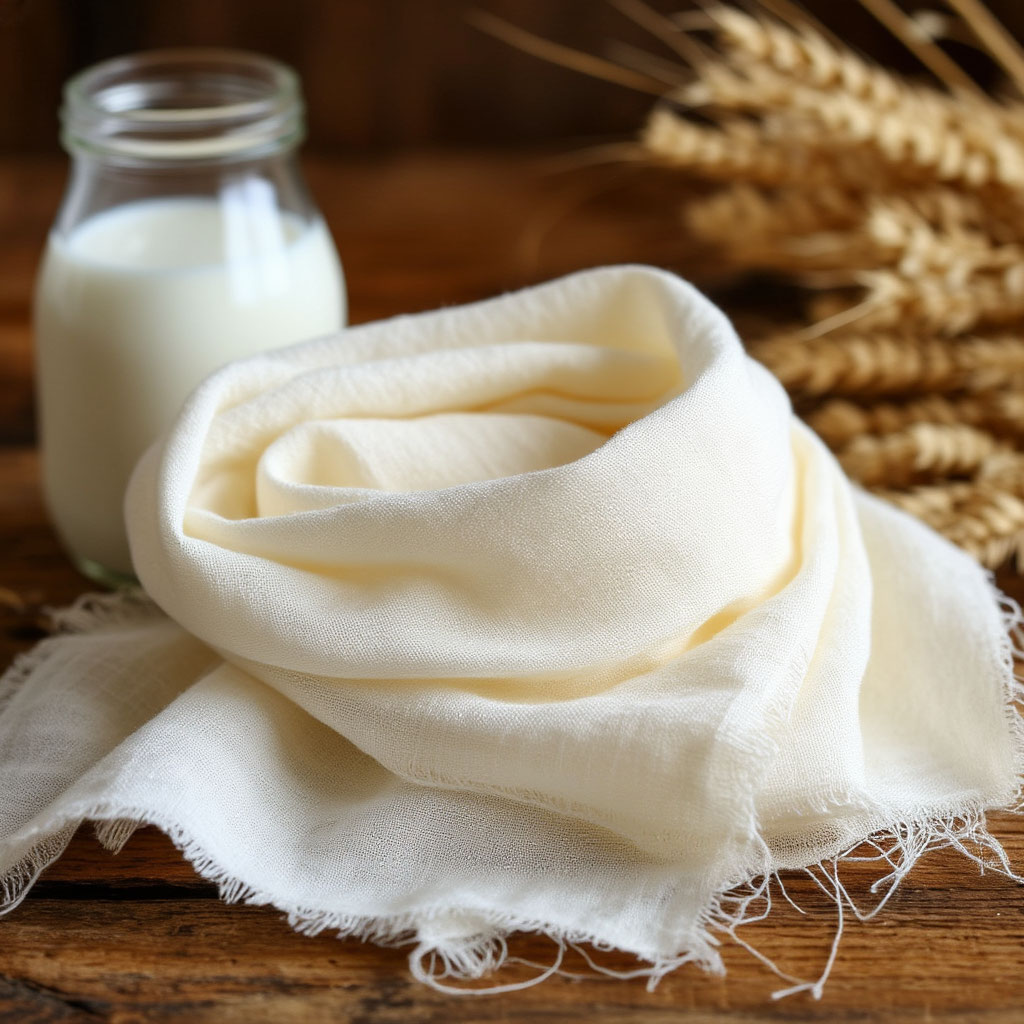
Benefits of Milk Protein Textiles
The primary advantage of how milk fabric is made lies in its exceptional tactile properties. Comparative studies demonstrate that this innovative textile offers:
- Three times softer texture than cotton;
- 40% gentler touch than cashmere;
- Similar smoothness to natural silk but without its characteristic coolness.
Casein fiber benefits stem from their unique molecular structure. The fibers feature a perfectly round cross-section, unlike ribbed plant fibers, ensuring they never irritate the skin. This makes milk protein fabric use particularly valuable for:
- Individuals with atopic dermatitis;
- Patients recovering from burns;
- Athletes requiring seamless marathon apparel.
Clinical testimonials from QMilk trials confirm: “After chemotherapy left my skin hypersensitive, only clothing made from this material provided comfort without irritation.”
Hypoallergenic and Antibacterial Advantages
Unlike synthetic alternatives, casein fiber benefits include:
- Zero microplastic shedding during washing;
- 99.5% reduction in E. coli bacteria growth;
- Natural anti-static properties.
The science behind how milk fabric is made explains these benefits:
- Positively-charged peptide chains disrupt bacterial membranes
- Maintains skin-friendly pH 5.5 on fabric surface
*Note: These properties remain effective through 30 wash cycles before requiring eco-friendly renewal.*
Thermoregulation: Climate-Adaptive Performance
This innovative textile demonstrates remarkable climate adaptability:
- Summer cooling: Material pores expand when heated
- Winter warmth: Hollow microchannels trap heat
Technical specifications: - Thermal conductivity: 0.026 W/(m·K) (comparable to alpaca wool)
- Air permeability: 98% (vs. cotton’s 85%)
Environmental Impact
Verified ecological benefits of sustainable dairy textiles:
- 200x less water consumption than cotton production
- Utilizes otherwise wasted expired milk
- Complete biodegradation within 8 weeks
Areas for improvement in how milk fabric is made:
- Reduced formaldehyde usage (already 90% less than viscose)
- Ongoing optimization of dairy farm carbon footprints
Practical Considerations
Performance characteristics:
- Superior colorfastness (50+ wash durability)
- Gentle care requirements (30°C wash, shade drying)
- Moderate durability (5-year average lifespan)
Designer insight: Milk protein fabric use excels in layering applications, eliminating static cling common with synthetic blends.
As a specialized textile solution, this material serves three key markets:
- Individuals with sensitive skin conditions
- Eco-conscious consumers
- Those prioritizing long-term comfort investments

Is Milk Fabric Really Sustainable?
In an industry where sustainability claims abound, milk fiber fabric presents itself as an eco-conscious alternative. But how does it truly measure up? This analysis examines its environmental credentials across five critical dimensions.
1. Life Cycle Analysis of Production
The manufacturing process for how milk fabric is made involves multiple stages:
- Dairy farming (28% of carbon footprint)
- Milk processing (15%)
- Textile production (52%)
- Logistics (5%)
While the final product biodegrades, its carbon footprint measures 6.8 kg CO2-equivalent per kilogram. This positions milk protein fabric use between organic cotton (4.2 kg) and polyester (9.5 kg) in emissions.
2. Water Consumption Realities
Contrary to popular belief, sustainable dairy textiles have a complex water footprint:
- Direct usage: 450 liters/kg (vs. cotton’s 10,000 liters)
- Indirect usage through cattle feed: up to 800,000 liters/kg casein
Innovations improving casein fiber benefits:
- 70% water reduction through milk waste utilization
- Experimental algae-based cattle feed
3. Chemical Usage in Manufacturing
The process of how milk fabric is made involves:
- Sodium hydroxide (less toxic than viscose production)
- Formaldehyde (<0.03% residual content)
- Aluminum salts (fully removed during processing)
Leading manufacturers employ closed-loop systems with 98% purification rates, enhancing milk fiber fabric’s safety profile.
4. Biodegradation Performance
Sustainable dairy textiles decompose at varying rates:
- Industrial composting: 8 weeks
- Natural soil: 5-6 months
- Seawater: 9-10 months
Colder climates (below 15°C) require specialized recycling facilities for optimal breakdown of milk protein fabric use.
5. Socio-Economic Benefits
Casein fiber benefits extend beyond environmental factors:
- 12% profit increase for farmers selling expired milk
- New markets for dairy surplus regions
- Low €50,000 entry point for small-scale production
Expert Perspective
As noted by Dr. Erika Fuchs (Berlin Institute of Sustainable Fashion): “How milk fabric is made demonstrates how traditional industries can transform waste into value. While not perfect, it represents necessary progress.”
Conclusion
Milk fiber fabric emerges as:
- A superior alternative to synthetics
- A viable cotton substitute in dairy-rich regions
- An evolving solution in sustainable textiles
The true value of sustainable dairy textiles lies in their potential to reshape industry thinking about resource utilization and waste transformation.
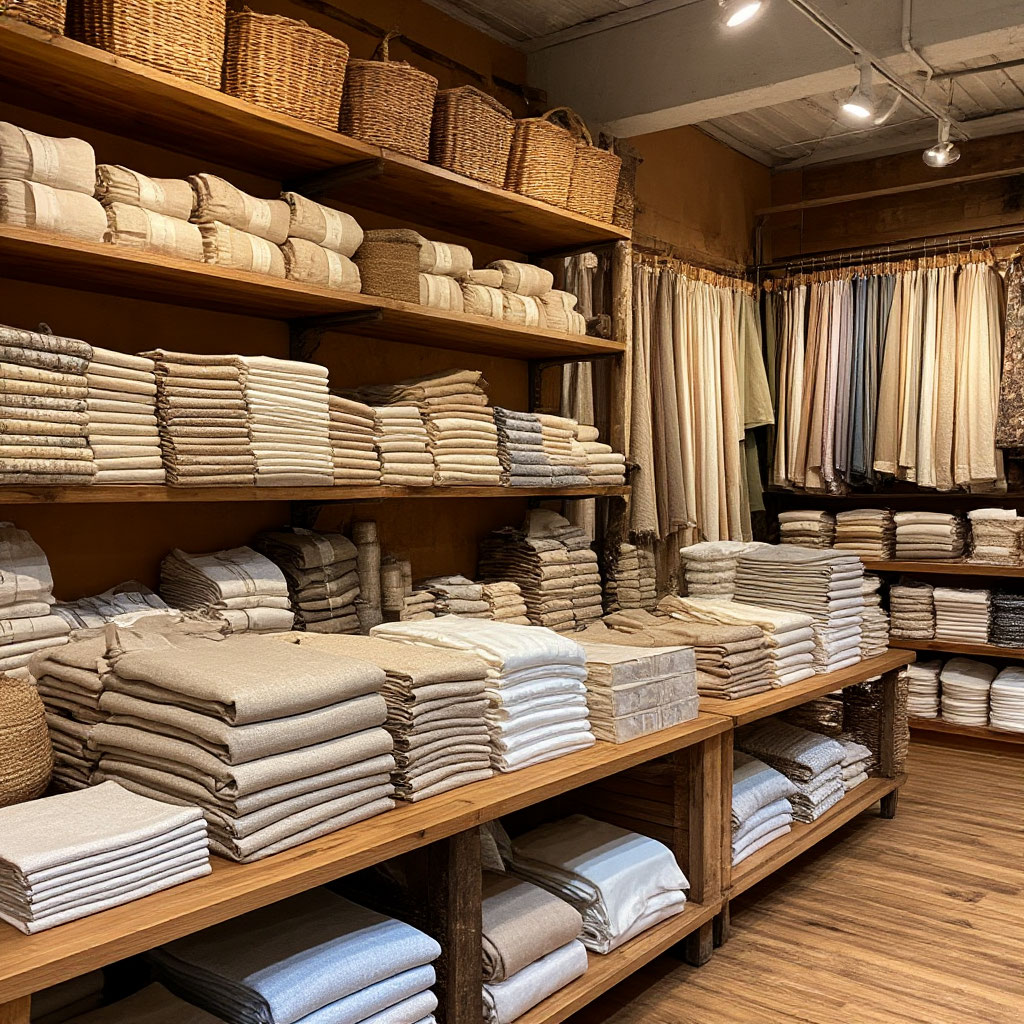
Where to Buy Milk Fiber Clothing
Global Production of Milk Fiber Fabric
The production of milk fiber fabric is currently concentrated in key regions, with Germany leading the industry. QMilk, established by microbiologist Anke Domaske in 2014, pioneered industrial-scale production of how milk fabric is made, offering premium basics and home textiles. Italy maintains its heritage in dairy-based textiles through luxury brands specializing in high-end milk protein fabric use, while U.S. startups focus on innovative approaches to sustainable dairy textiles using expired dairy products.
Purchasing Options and Ordering Process
Brands specializing in casein fiber benefits typically operate on a pre-order basis through direct channels. This model accommodates limited production runs and customized sizing, with lead times averaging three to five weeks. Several manufacturers enhance accessibility through sample programs and extended return policies, making milk fiber fabric more approachable for conscious consumers.
Emerging Markets and Regional Availability
In developing markets, milk protein fabric use remains niche, primarily available through specialized importers or community-driven initiatives. Independent designers are beginning to explore how milk fabric is made, with pilot collections signaling growing interest in sustainable dairy textiles as a premium material alternative.
Alternative Acquisition Channels
Cost-conscious buyers can access casein fiber benefits through secondary markets and seasonal sales. Premium resale platforms increasingly feature verified milk fiber fabric items, while eco-conscious communities facilitate material exchanges, expanding access to these innovative textiles.
Authenticity Verification
As demand for milk protein fabric use grows, authentication becomes crucial. Genuine products feature specific certifications and material characteristics that distinguish them from imitations. The unique properties of how milk fabric is made – including its distinctive texture and biodegradability – serve as additional indicators of quality.
Future Market Outlook
Industry analysts project significant expansion for sustainable dairy textiles, anticipating broader retail distribution and improved affordability. Technological advancements in casein fiber benefits processing may reduce costs while maintaining the premium qualities that define milk fiber fabric, potentially transforming it from a niche offering to a mainstream sustainable option.
Before the conclusion, watch this clear English explainer on how milk fabric (casein fiber) is made and where it’s used.
FAQ
Is milk fabric vegan or cruelty-free?
No. Milk fabric is made from animal-derived casein, so it isn’t vegan. Some brands use waste milk, but that doesn’t change its origin. If you prioritize cruelty-free, pick plant fibers instead. Check fiber content for “casein” or “azlon from milk.”
Can people with lactose intolerance or milk allergies wear milk fabric?
Yes for lactose intolerance; the issue is ingestion, not wearing. For diagnosed milk-protein allergy, be cautious because casein is the fiber’s protein. Do a patch test or choose lined garments. Avoid direct-to-skin items if you’ve had contact reactions.
Will milk fabric smell like milk or go bad over time?
No. Properly processed casein fiber is odorless and doesn’t “spoil.” Odor issues usually come from damp storage, not the fiber. Dry completely and store in breathable bags. Avoid long-term humidity.
Does milk fabric shed microplastics in the wash?
No for 100% casein fiber; it’s a protein and biodegradable. Yes if blended with polyester or acrylic marketed as “milk silk.” Read labels and avoid blends if microplastic shedding is a concern. Choose pure casein or natural-fiber blends.
How much does milk fabric cost in the U.S., and where can I buy it by the yard?
Expect roughly $16–$44 per yard, depending on purity and blends (often listed as $15–$40 per meter). Yardage is niche, found in specialty shops or small-batch suppliers. Spinning fiber is easier to source than finished yardage. Ask for swatches to verify purity.
For consumers prioritizing eco-conscious materials, milk protein fabric use represents a compelling combination of luxury and sustainability. While currently positioned in the premium segment, evolving production methods suggest wider accessibility without compromising the environmental advantages that define how milk fabric is made. You can now download a milk fabric checklist — a practical tool to help you understand its properties, care requirements, and potential uses for eco-conscious projects.
